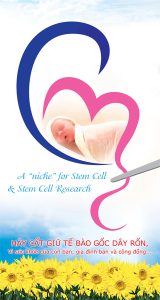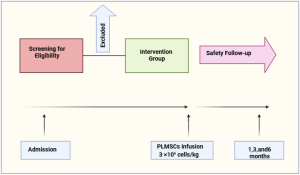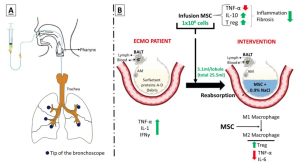NY Breaking, April 2023
Cancer patient Nilush Aponso knows he only lives today thanks to a decision by two anonymous mothers to donate their newborn babies’ umbilical cords. The blood contained in the cords provided life-saving cells to cure his cancer.
Nilush, 42, from Barwell, Leicester, owner of a dog day care centre, had an aggressive form of blood cancer, acute myeloid leukaemia. At first, chemotherapy seemed to cure the disease, but three months after his treatment ended, the cancer returned. He was told the only remaining treatment option was a stem cell transplant – donated cells that would find their way into his bone marrow, where they could grow and make healthy new blood cells. Nilush, 42, from Barwell, Leicester, had an aggressive form of blood cancer. He said he encourages his dog shelter customers to donate
“I spent eight months in and out of the hospital, had chemo three times, and tried different types of drugs, more than I can remember,” says Nilush.But none of them worked and doctors told me my only option was a transplant.” Stem cells can be taken from a donor’s blood or bone marrow, but the patient’s tissue type must match.
“My younger brother was tested to see if he was a match, but unfortunately he wasn’t,” says Nilush. “And being Sri Lankan, I was told that the chances of finding a match were much lower than usual because there is a shortage of people from minority ethnic backgrounds on the bone marrow registry.” Those from a minority ethnic background have only a 37 percent chance of finding a bone marrow match from an unrelated donor, while someone from a Caucasian white background has a 72 percent chance because many more from this population are registered with the registry.
A recruitment campaign among the Sri Lankan community in London failed to find a match for Nilush, so his only chance was a transplant of stem cells from umbilical cord blood, i.e. what remains in the placenta and umbilical cord after the birth of a Baby. Stem cells from umbilical cord blood do not have to be as similar as adult stem cells in terms of donor tissue type. This blood is rich in blood stem cells similar to those found in bone marrow, and because these cells have the ability to transform themselves into different types of cells, they can be used to treat a range of blood cancers, genetic disorders and immune deficiencies.
The charity Anthony Nolan, which runs the oldest bone marrow registry in the UK, is now campaigning to encourage more parents to donate their baby’s cord blood. Since the start of the umbilical cord blood storage program in 2008, 324 of the donations have been used for life-saving transplants: the charity aims to collect 800 umbilical cords per year, drawn from as diverse a population as possible. The major advantage of stem cell transplants from umbilical cord blood is that they are less likely to be rejected by the host than cells from an adult donor.
“The cord blood stem cells are more naive because they have not been exposed to the environment or pathogens that can cause disease in a patient,” explains Dr Roger Horton, lead cord specialist at Anthony Nolan. ‘They don’t react in a way that could negatively affect the patient’s long-term health, which is always possible with cells from adult donors. This way we can have a higher degree of mismatch and the transplant can still succeed.’
If no suitable donor is found, the charity scours international registries looking for a match, as happened with Nilush. He knows that the stem cells used in his transplant come from the umbilical cord blood of a baby born in the US or a baby born in Australia, as both match. “I’m all around — a Sri Lankan, living in England, with an American or Australian immune system,” Nilush laughs.
Stem cells from umbilical cord blood not only increase the number of possible transplants, but also expand the age range of patients to retirement age. “With adult donor cells, high doses of chemotherapy are needed to thoroughly cleanse the patient’s own immune system – and the side effects of this may be too severe for elderly patients or those with other complications. But if you use cord blood, you can use much less intense chemo, so it has widened the transplant window to people who have recently retired or are older.” explains Dr Horton.
Cord blood transplants have also increased survival rates for some blood cancers, especially in young patients with high-risk blood cancers. The exact figures will be announced later this year. The disadvantage of using these cells is that an umbilical cord can only contain 70 to 300 ml of blood.
‘It’s a finite amount, so we can’t go back for a top-up if a patient needs more, which of course we can do if an adult donor is a match,’ adds Dr Horton. (And in some diseases, “only adult donor cells will work because they can be given in larger amounts.”)
The actual transplant is relatively simple, says Dr. Horton. “The cord blood bag, which has been stored at minus 196c, is thawed in a water bath at the patient’s bedside and injected into the chest through a central line, in a process that takes less than 20 minutes. It then takes between seven and 28 days to repopulate the bone marrow and create a functioning immune system” he says.
After the umbilical cord blood transplant in November 2013, Nilush had to stay in hospital for two months. Since then he has remained cancer free. But when he was diagnosed in June 2012, after losing weight and lacking energy, he was told his cancer was so aggressive that he had to start treatment immediately. He didn’t even get time to go home first. “I just had to start the chemotherapy right away,” he recalls.
Anthony Nolan collects cord blood from babies born in five hospitals: St Mary’s Oxford Road and St Mary’s Wythenshawe, both in Manchester; Royal Infirmary of Leicester; Leicester General Hospital and King’s College Hospital in London. Separately, the NHS collects cord blood from University College London Hospital, St George’s Hospital in London and Luton & Dunstable University Hospital.
‘Right after the baby is born and the placenta is delivered, one of our collectors will remove the placenta and umbilical cord,’ says Dr Horton.Once collected, the blood is processed and tested to ensure it is free of viruses and bacteria, and is used for research or frozen and stored to be used for patients in the UK or the rest of the world. world. It’s the same process for cord blood collected by the NHS.
Anthony Nolan is working with the NHS in sharing the register and together they store around 35,000 cord blood donations in Nottingham and Bristol. Unlike blood donations, cord blood can be stored indefinitely. Despite the amount already saved, more donations are needed, especially to help patients from African, African-Caribbean, Asian, Chinese, Jewish, Eastern European and Mediterranean communities.
Xin Tong, 34, and Justas Budraitis, 29, donated their daughter’s umbilical cord blood.
Xin was a blood donor in China and is happy that her daughter Luna has followed suit, saying, “She was born to be a lifesaver”. The couple, from China and Lithuania respectively, met while studying at the University of Manchester. Now married and still living in the city, their daughter Luna was born on October 26, 2022, weighing 8 lbs 9 oz. “We wanted to welcome her to the world by doing something meaningful,” says Xin, e-commerce account manager.
We saw the posters in the hospital about donating when we went for antenatal checkups and decided to sign up,’ explains Xin. “It was a simple process and we were told that if we went to the hospital for the delivery I should tell the midwife, who would inform Anthony Nolan. “I ended up going to the hospital early because Luna had stopped growing and needed to be induced, but I was still able to donate the umbilical cord.”
Xin was a blood donor in China and is happy that her daughter has followed suit. “She was born to be a lifesaver – she’s really special,” says Justas, who is an IT consultant.
Understandably, Nilush and his wife Helen, 55, are also outspoken about the importance of cord donation. “I tell all my clients about its benefits — and two of them have since donated successfully,” Nilush says proudly. “I wish everyone would watch it. I don’t know when the parents donated or who they are, but their decision to donate their babies’ umbilical cords is why I’m here today. And I want other people to have the same chance.”
Source: NY Breaking
Link: https://nybreaking.com/how-umbilical-cords-from-babies-like-luna-are-saving-cancer-patients-lives/








